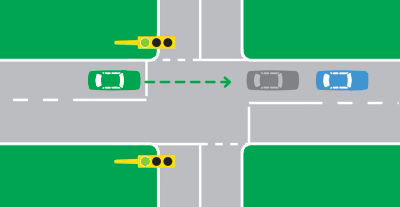Intersections
Around half of all crashes on NSW roads happen at intersections. Know the rules for giving way and make sure you slow down at intersections.
Intersection safety
You should approach an intersection at a speed that allows you to stop and give way to vehicles in or approaching the intersection.
Look out for motorcycle riders. More than half of all motorcycle crashes involving other vehicles happen at intersections.
Different rules control traffic and make it clear who has right of way at intersections. The rules depend on whether the intersection has:
- ‘Stop’ signs
- ‘Give way’ signs
- no signs or lines
- traffic lights
- a roundabout.
If you see police or a traffic controller at an intersection, you must follow their hand signals and directions.
Stop signs and lines at intersections
When you stop at a ‘Stop’ sign or ‘Stop’ line, you must give way to vehicles driving in, entering or approaching the intersection except for:
- an oncoming vehicle that’s also at a ‘Stop’ sign or line and is turning right
- an oncoming vehicle that’s at a ‘Give way’ sign or line and is turning right
- a vehicle turning left using a slip lane
- a vehicle making a U-turn.
When you’re turning left or right at a ‘Stop’ sign or line, you must also give way to pedestrians crossing the road that you’re turning into.
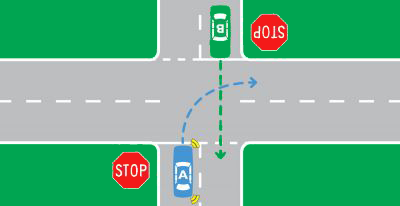
Give way signs and lines at intersections
When you’re at a ‘Give way’ sign or ‘Give way’ line, you must give way to vehicles driving in, entering or approaching the intersection except for:
- an oncoming vehicle that’s also at a ‘Give way’ sign or line and is turning right
- an oncoming vehicle that’s at a ‘Stop’ sign or line and is turning right
- a vehicle turning left using a slip lane
- a vehicle making a U-turn.
When you’re turning left or right at a ‘Give way’ sign or line, you must also give way to pedestrians crossing the road that you’re turning into.
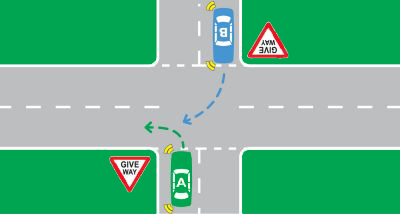
Rules at intersections without signs
Some intersections do not have signs, traffic lights or a roundabout. At these intersections, when you turn across another vehicle’s path, you must give way to that vehicle.
You must also give way to pedestrians crossing the road that you’re turning into.
If another driver does not give way to you, do not force them or yourself into a dangerous situation.
Turning at intersections
Turning right
When you’re turning right at an intersection without signs, you must give way to:
- a vehicle approaching from the right
- an oncoming vehicle going straight ahead
- an oncoming vehicle turning left
- pedestrians crossing the road you’re turning into.
When you and another vehicle are turning right at an intersection, both vehicles can turn at the same time and pass in front of each other.
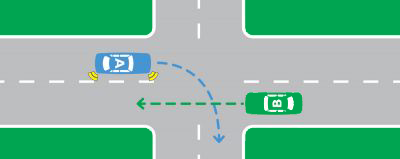
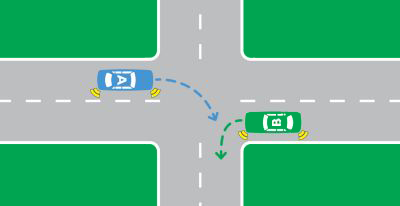
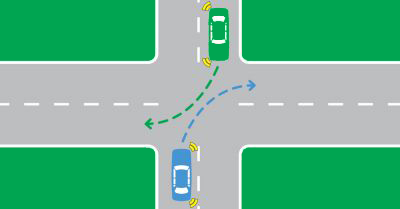
Turning left
When you’re turning left at an intersection without signs, you must give way to vehicles on your right. You must also give way to pedestrians crossing the road you’re turning into.
See Slip lanes for rules for turning left at an intersection with a slip lane.
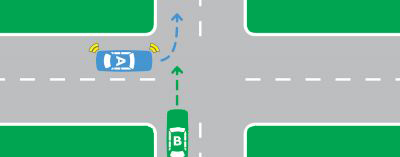
T-intersections
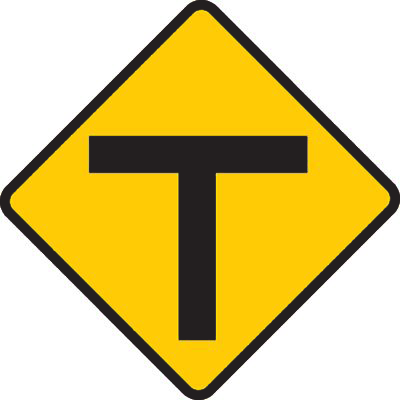
If you’re driving on a road that ends at a T-intersection, you must give way to all vehicles driving on the continuing road, unless a sign says otherwise.
If you’re turning right from the continuing road, you must give way to oncoming vehicles on the continuing road going straight ahead or vehicles turning left at the intersection. This is also the rule for T-intersections where the continuing road goes around a corner, rather than straight.
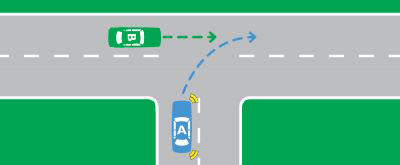

Keeping intersections clear
You must not enter an intersection unless there’s space for your vehicle in your lane on the other side of the intersection. This includes all intersections and crossings, including intersections with traffic lights, railway level crossings and pedestrian crossings.
Some intersections and roads have ‘Keep clear’ markings on the road. You must not stop in a ‘Keep clear’ area.
